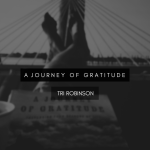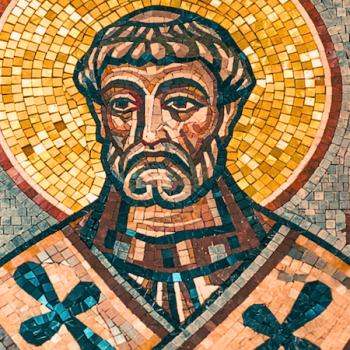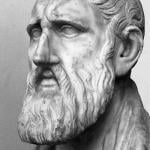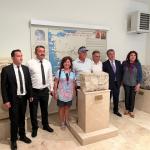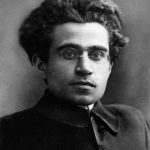
In our fast-paced lives, it’s easy for prayer to become a routine, losing its profound power in what we may call its familiarity. I believe there is a transformative practice of maintaining a daily prayer rhythm. In this blog post, we will explore the uniqueness of prayer as we understand it and a suggested daily prayer rhythm that I am practicing with. Both Judaism and Christianity teach that personal prayer is a sacred gift, one that demands our intentionality and focus. Rabbi Reuven Hammer highlights that “one of biblical Judaism’s most significant contributions to the world is personal prayer—spontaneous, informal, and independent of sacrifices or magical rites.” This distinction is crucial; unlike many ancient religions where prayer was often transactional and tied to rituals, the practices of prayer in these faiths invite us into a deeply personal relationship with God. Prayer should not merely be a familiar routine but an intentional practice that aligns us with the prayer framework of petition, praise and thanksgiving, and confession and forgiveness.
The Gift of Personal Prayer
For those of us raised in a Western context where prayer is often practiced in spontaneous ways (even when using liturgical forms), it can be easy to overlook the significance of prayer as a gift. If we want to pray, we pray when and what we “feel” like. This is what is familiar to us. For many of us petition, praise and thanksgiving, and confession and forgiveness already are the elements of our prayer practice. Honestly, I have known atheists who occasionally pray, doing so in a personal and unstructured manner. So, if personal prayer is truly a gift, what sets it apart and why does it seem so common? Our common or familiar understanding of prayer as conversation is because it was rooted in Judeo-Christian influences on modern society. What is unique has become familiar. Personal prayer is notably rare in many ancient religions, outside of Judaism. While various forms of prayer existed in most near-Eastern religions, they were often tied to sacrificial rituals and magical practices, viewed as transactions to secure specific outcomes from the gods. Participants would offer food and drink to pagan gods, with their prayer, because they believed gods relied on humans for their sustenance. If you gave what the gods needed, you would hopefully get what you wanted in return. We see this notably in the story of the Epic of Gilgamesh, where the gods need food and drink offerings, sustenance, which was supplied by humans in sacrificial offerings. They believed they could appease the gods, and gain favor, through this. Gilgamesh prays as a way of pleading with the great gods. This was not the case in Judaism. Prayer in the Judeo-Christian framework was revolutionarily different from other religions. Prayer was a palace of relationship, and did not need sacrifice, and even could be approached with lament and blatant honesty. In the scriptures, through prayer individuals are given permission to approach God, even with negotiation, even without buttering God up first (see Genesis 18:16-33; Exodus 32:9-14). The God of Israel has created prayer as a practice that is deeply personal, conversational and a natural act with emotion, free from transactional expectations and ritualistic approaches, said from the broken contexts that we find ourselves in (see Psalm 51; 1 Samuel 1:9-18).
This is what was so different about the prayer method that is now familiar to us. Throughout the Torah and the First (Old) Testament, prayer is not portrayed as a means of trading with God to control fate. While people do intercede for God to change situations or outcomes, the intention is not to appease God for a sense of control. Instead, it is an appeal to God’s nature to address the brokenness in our world and humanity. In the Judeo-Christian approach to prayer, we seek for God’s authority and rule to be extended, rather than striving to gain authority and power for ourselves. Authority and power are rooted in God, not as something to be acquired (see 1 Kings 3:5-14; Nehemiah 1; Daniel 2:17-23). Both Jewish and Christian perspectives view God as unaffected by the struggles of human existence—self-sustaining and not in need of our appeasement. Prayer is not about gaining authority, it is about tapping the shoulder of the one who has authority and inviting them into the situation without manipulation, based on relationship and not by appeasing the gods’ needs.
From these early stories, prayer is fundamentally about intimacy with God (see Exodus 33:11 and Psalm 23). It serves as a means of self-expression, allowing us to align ourselves with the divine plan and expectations for us as ambassadors of God’s Kingdom. Prayer roots us in gratitude and confession. While it can involve a sacrificial attitude, it is not “sacrificing” as a way to gain something; rather, it is a path to confession and connection—or reconnection. Throughout Israel’s history, prayer is distinct from sacrifice, intended as “a spontaneous utterance, a way of relating to and communicating with the Almighty, praising, thanking, and blessing God, as well as pleading for His attention,” as Rabbi Hammer notes. Ultimately, prayer invites us into a deeper relationship with God the Father, fostering a transformative dialogue. It still means that today. That transformative dialogue is still a revolutionary part of prayer.
The Daily Prayer Rhythm of Prayer: Petition, Praise, and Confession
Many practice praying at least three times a day: once at each meal, plus some pray additional prayers at the start and end of the day. In our understanding of prayer, there isn’t a needed sacrifice, nor does it need to be done in some sort of holy Temple-like space. Prayer is part of life. The Berakot, part of Jewish liturgical practice, has been shaped and compiled over centuries by various sages and religious authorities. This compilation reflects the collective wisdom and interpretations of Jewish scholars throughout history, particularly regarding blessings and the laws surrounding them. When it comes to prayer, these sages have reached a consensus that calls for three daily prayers—one in the morning, one in the afternoon, and one in the evening. There is some debate about what to do if one misses a prayer and who might be able to say it later in the day, but the standard remains three daily prayers. Symbolically, these prayers are said to have been modeled after the patriarchs: Abraham, Isaac (representing the afternoon prayer), and Jacob (representing the evening prayer). The rabbinic prayer model connects these practices of prayer to the stories of the patriarchs and, as Rabbi Hammer points out, to Moses. This framework developed three categories of prayer: (1) “petition,” (2) “praise and thanksgiving,” and (3) “confession and forgiveness.” If we would look at prayer throughout the first Testament, we would find that prayer has always been intended as an intimate act of petition, praise, and gratitude—grounding ourselves in the desire for God’s kingdom to be extended, giving glory to God for who God is, and finding contentment by recognizing all the blessings we have received. Prayer in the Judeo-Christian understanding has always been an intimate act of (1) “petition,” (2) “praise and thanksgiving,” and (3) “confession and forgiveness.”
The Continuity of this Daily Prayer Rhythm of Prayer
This understanding of prayer persisted during the time of Jesus, who grew up in a culture where three daily prayers were common. While there’s no explicit record of him strictly following this practice, we do see him praying at various times: in the morning (Mark 1:35), possibly in the afternoon, and in the evening (Matthew 26:36-46). This suggests that Jesus engaged in regular prayer consistent with the customs of his time.
The Lord’s Prayer and the many prayers modeled by Jesus emphasize prayer as an act of petition, praise and thanksgiving, and confession and forgiveness. These themes are evident in Jesus’ teachings on prayer and the prayers he prayed. Paul also highlights the necessity of petitionary prayer, urging believers to present their requests to God: “Do not be anxious about anything, but in every situation, by prayer and petition, with thanksgiving, present your requests to God” (Philippians 4:6). In his letter to the Colossians, he describes prayer as an expression of gratitude, instructing us to “Let the message of Christ dwell among you richly… Singing to God with gratitude in your hearts. And whatever you do, whether in word or deed, do it all in the name of the Lord Jesus, giving thanks to God the Father through him” (Colossians 3:16-17). James, the brother of Jesus, reminds us of the importance of confession and forgiveness in prayer, calling us to “confess your sins to each other and pray for each other so that you may be healed” (James 5:16). Together, these passages highlight the significance of intentional prayer centered around petition, praise and thanksgiving, and confession and forgiveness. The Didache, an ancient text from the early church, instructs Christians to follow the Lord’s pattern of prayer three times a day, likely rooted in their Jewish heritage. They found it essential to make petition, praise and thanksgiving, and confession and forgiveness a focus of their day whenever they gathered and three-times a day. Thus, prayer—intentionally cultivating petition, praise and thanksgiving, and confession and forgiveness—was vital in the witness, ways, words, and works of Jesus and throughout the way the early church lived out the example set by Jesus.
Just as the sages connected prayer to the lives of the patriarchs, the New Testament similarly frames prayer as a personal prayer is a sacred gift, one that demands our intentionality and focus. Prayer is an essential means to deepen our connection with God, express our dependence on God, and to re-align our lives with God’s will. This framework of practicing petition, praise and thanksgiving, and confession and forgiveness, is part of what can cultivate a deeper connection with God. It is not a formula. It doesn’t demand appeasement. This triad approach to prayer is important because it reminds us that God wants to be in our day-to-day lives. It is easy for prayer to become a routine, losing its profound power in what we may call its familiarity, but let us not lose sight of how special it is that God the Father wants to be in our lives and doesn’t demand us to jump through hoops and hurdles to have a conversation.
Embracing Simplicity in our Daily Prayer Rhythm
Rabbi Hammer highlights that “the prayers of the Torah are essentially brief, spontaneous expressions of praise, petition, or thanksgiving, conveyed in simple language and without ritual elements.” This simplicity underscores the authentic and immediate communication we can have with God. We often take this simplicity for granted, overlooking its profound significance. Rabbi Hammer further explains that “most importantly, Jewish worship—and that of Judaism’s daughter religions—has been shaped by two biblical insights: that prayer and sacrifice are independent, and that anyone can pray, at any time, and in any place… Biblical prayer transformed what were once rigid and stylized ritual utterances into a means for all people to openly express their deepest emotions before God.”
Practical Applications of the Prayer Daily Prayer Rhythm
These three categories—petition, praise and thanksgiving, and confession and forgiveness—form an essential triad framework for prayer. They can become a daily prayer rhythm. This framework is deeply rooted in both scripture and the rich histories of Judaism and Christianity.
To make the most of this practice, consider starting your morning with petition and intercession, bringing your needs and the needs of others before God. This sets a tone of dependence and openness for the day ahead. As you reach lunchtime, when the challenges of life may feel particularly heavy, take a moment to ground yourself in worship and thanksgiving. Reflect on the blessings in your life, fostering a spirit of contentment and gratitude amidst any struggles you face.
Finally, as the day winds down, dedicate time in the evening for confession and forgiveness. Reflect on your day, acknowledging moments where you may have harbored resentment or crossed boundaries you shouldn’t have. This act of reflection not only encourages personal accountability but also opens the door to healing and reconciliation, both with God and within yourself. Embracing this triad approach can transform your prayer life into a more meaningful and intentional practice.
As we navigate the complexities of life, let us remember that prayer is not just a ritual, it is something special, a profound invitation to engage in a transformative dialogue with God. By embracing the framework as a daily prayer rhythm we deepen our relationship with the divine and align our hearts with God’s purpose. In this sacred practice, transformation through intimacy and strength, a reminder that we are never alone in our journey because God wants to be in our lives. May we cultivate this intentional rhythm of prayer, allowing it to enrich our lives and renew our spirits each day.



